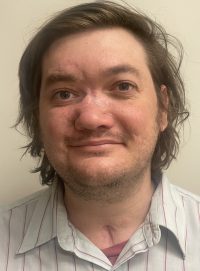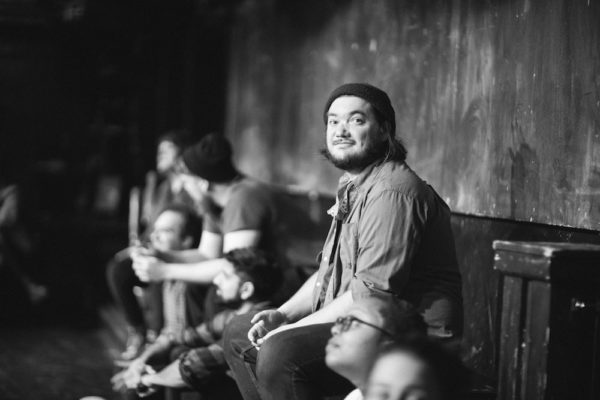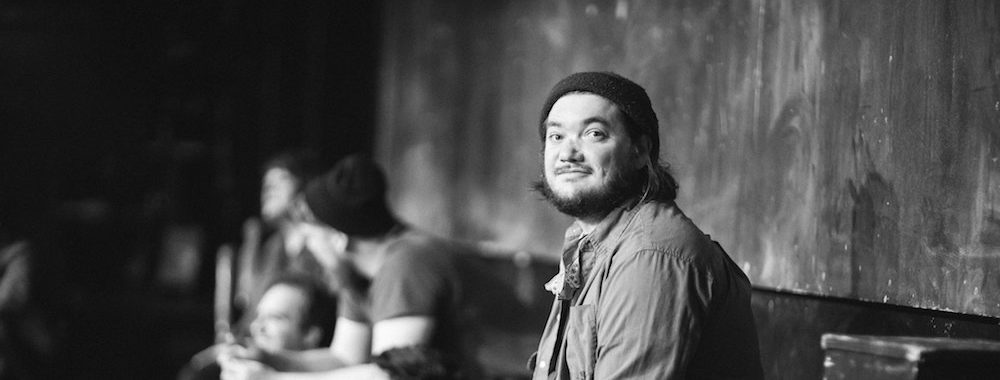In this blog post series, you’ll learn more about Snow City Arts’ amazing Teaching Artists! Every weekday, our TAs deliver arts education to children and young adults in inpatient and outpatient pediatric units at our partner hospitals. Through in-person and virtual workshops in creative writing, media arts, music, theatre, dance and visual arts, they actively engage young patients, transforming hospital rooms into arts studios.
We are so proud of their amazing, tireless work, and we hope that you get to know more about them in these interviews conducted by our 2022 Kellogg Board Fellow, Dana Faith Levin.
 Trent Lunsford is a Chicago-based writer, performer, and musician. He performs regularly in the Neo-Futurists’ long-running show The Infinite Wrench. Certified in the Feldenkrais Method, Trent explores the connection between movement and writing to help his students at Lurie Children’s Hospital find a greater sense of ease in their artistic process. He has taught at The Steppenwolf School, Chicago Physical Theater, Second City, Columbia College, and the University of Chicago. He also plays bass in the Chicago band Swearwords.
Trent Lunsford is a Chicago-based writer, performer, and musician. He performs regularly in the Neo-Futurists’ long-running show The Infinite Wrench. Certified in the Feldenkrais Method, Trent explores the connection between movement and writing to help his students at Lurie Children’s Hospital find a greater sense of ease in their artistic process. He has taught at The Steppenwolf School, Chicago Physical Theater, Second City, Columbia College, and the University of Chicago. He also plays bass in the Chicago band Swearwords.
Snow City Arts: Is there an art medium you prefer or enjoy working with the most?
Trent: Music gives me the most immediate satisfaction; I could do it all day, and it takes all forms. It’s the most self-soothing medium for me and helps me get from point A to point B. Writing is my other preferred medium, but it’s harder to sustain and can be a bit of a grind.
Who or what are your biggest influences?
I am most influenced by artists and art that is Chicago-based. Examples include the theatre company The Neo-Futurists and the musician Bill MacKay. I’m obsessed with finding new pockets of Chicago art and music, and especially jazz, given the rich Chicago jazz history.

Trent onstage with the Neo-Futurists in Chicago. (Photo: Joe Mazza, Brave Lux)
If you could describe your work in three words, what would they be?
Nostalgic, warm, honest.
What is the hardest part of being an artist?
You never know what’s going to happen next. I have all sorts of aspirations and I don’t know on what timeline those will all play out. It’s hard to silence the inner critic and think about the future, how it will materialize, and what people will think. I want to feel good about the art I’m making.
What have you learned so far working at Snow City Arts?
I’ve learned that the way I frame things to students and the language I use is incredibly important. I need to be specific with how I ask things; for example, “I’m a songwriter, do you want to write a song?” versus “I’m a musician, do you want to make music?”
What is your favorite project to work on with your students?
When I first arrived at Snow City Arts, I learned a lot about animation and the students loved that. I was able to demystify a moving image and it was incredible to watch a student hit “play” on 35 frames they just drew and see that it’s a movie! Gabe [Andres] taught me how to do it, and when you start teaching here, you learn a lot of things to accommodate student interests. I was not a visual artist before, but now I am. I love recording music on GarageBand with kids, and say “yes” to every single thing.

“Umbrella with Raindrops” by Elayaliz, age 12, an animation made in one of Trent’s student workshops.




Leave A Comment